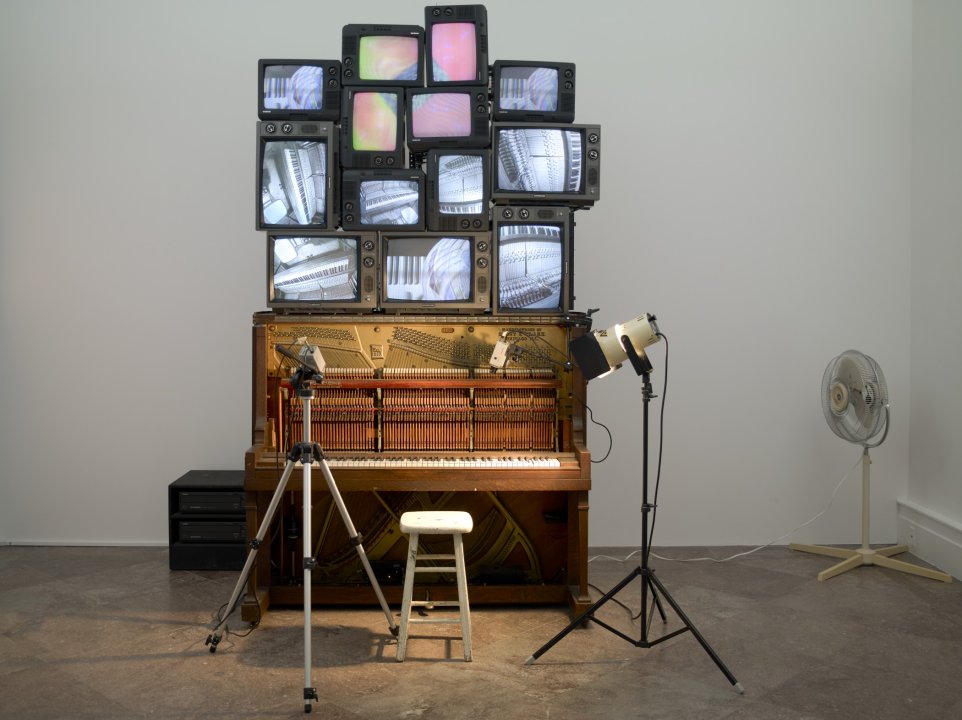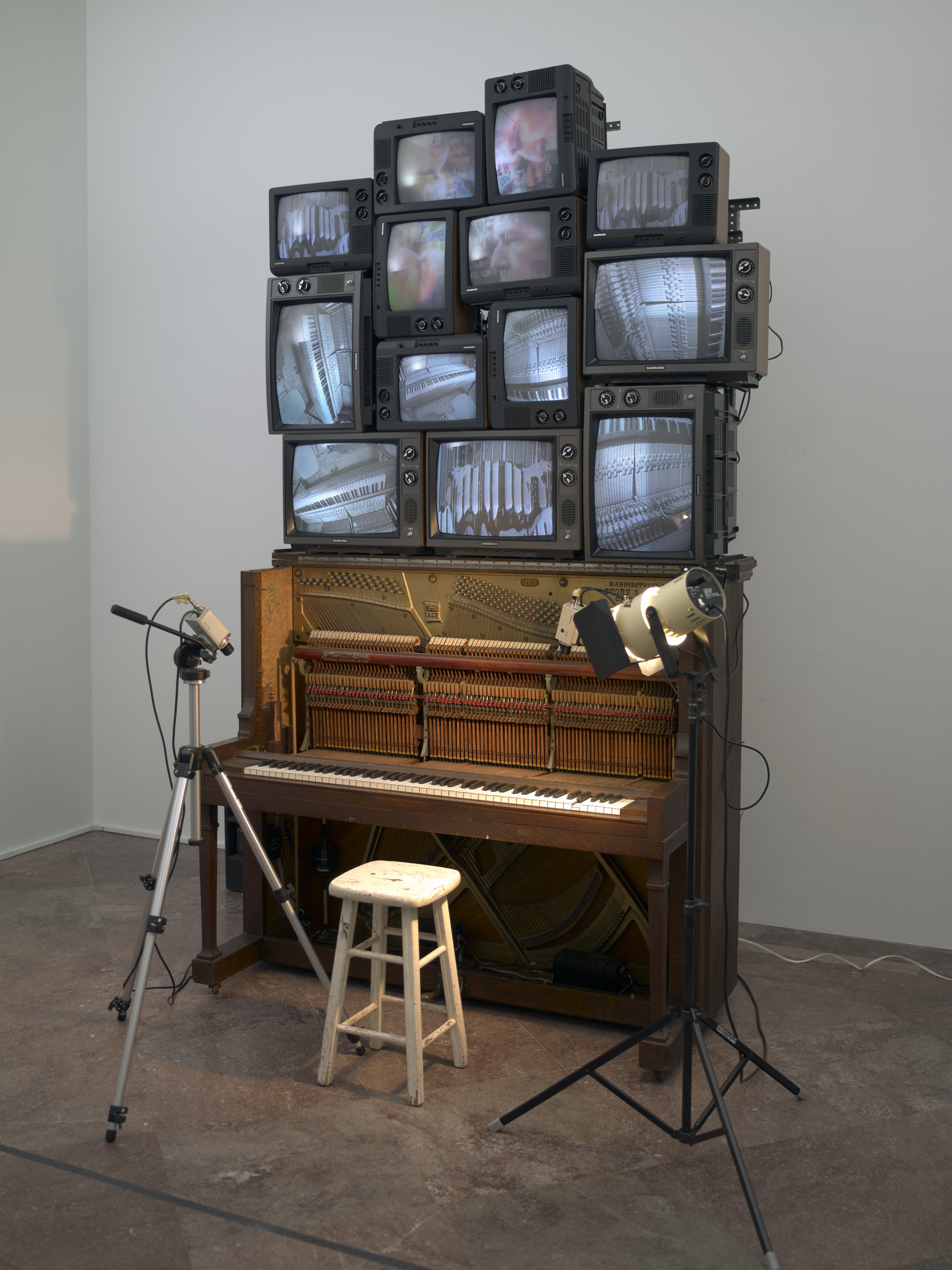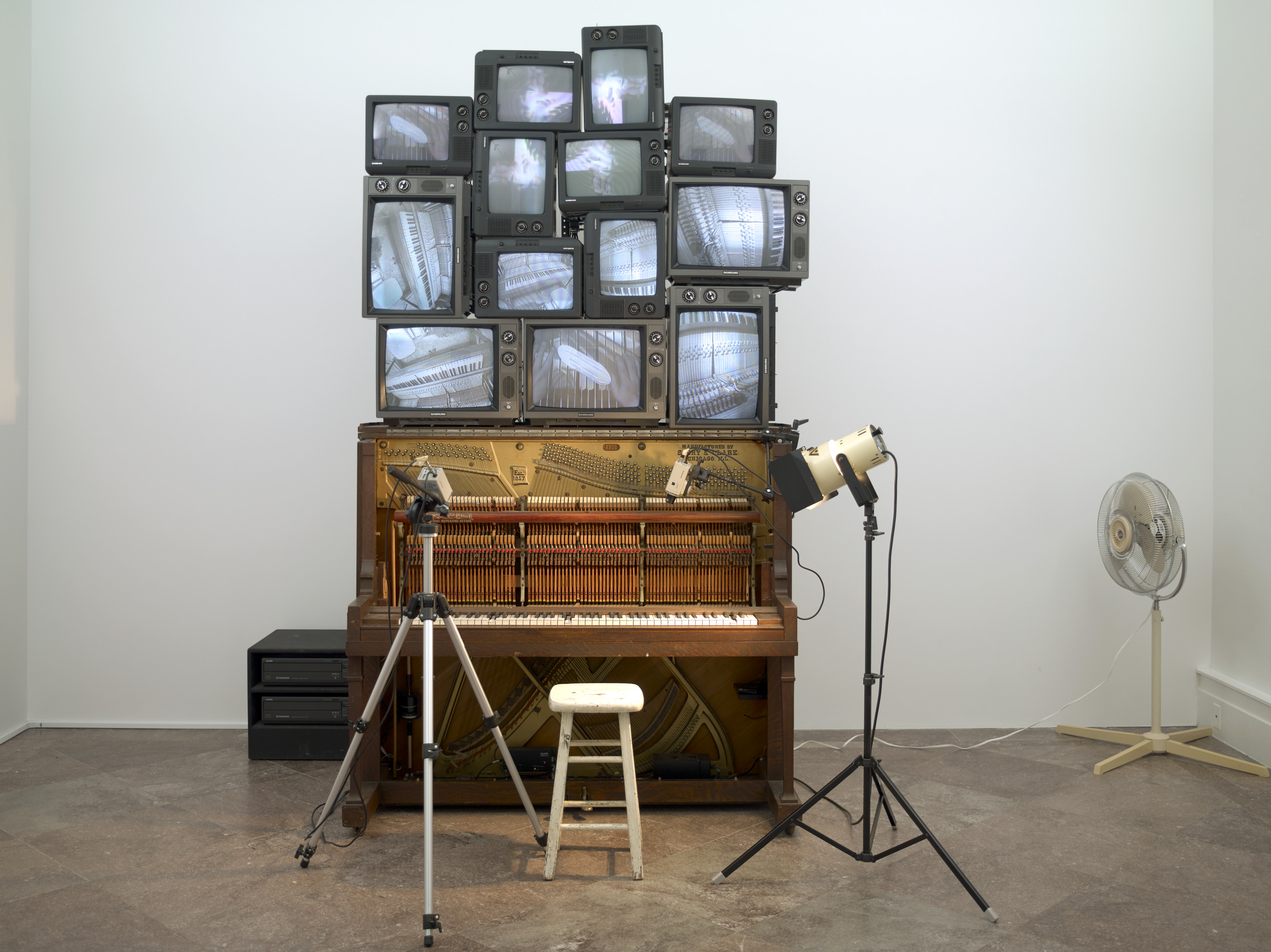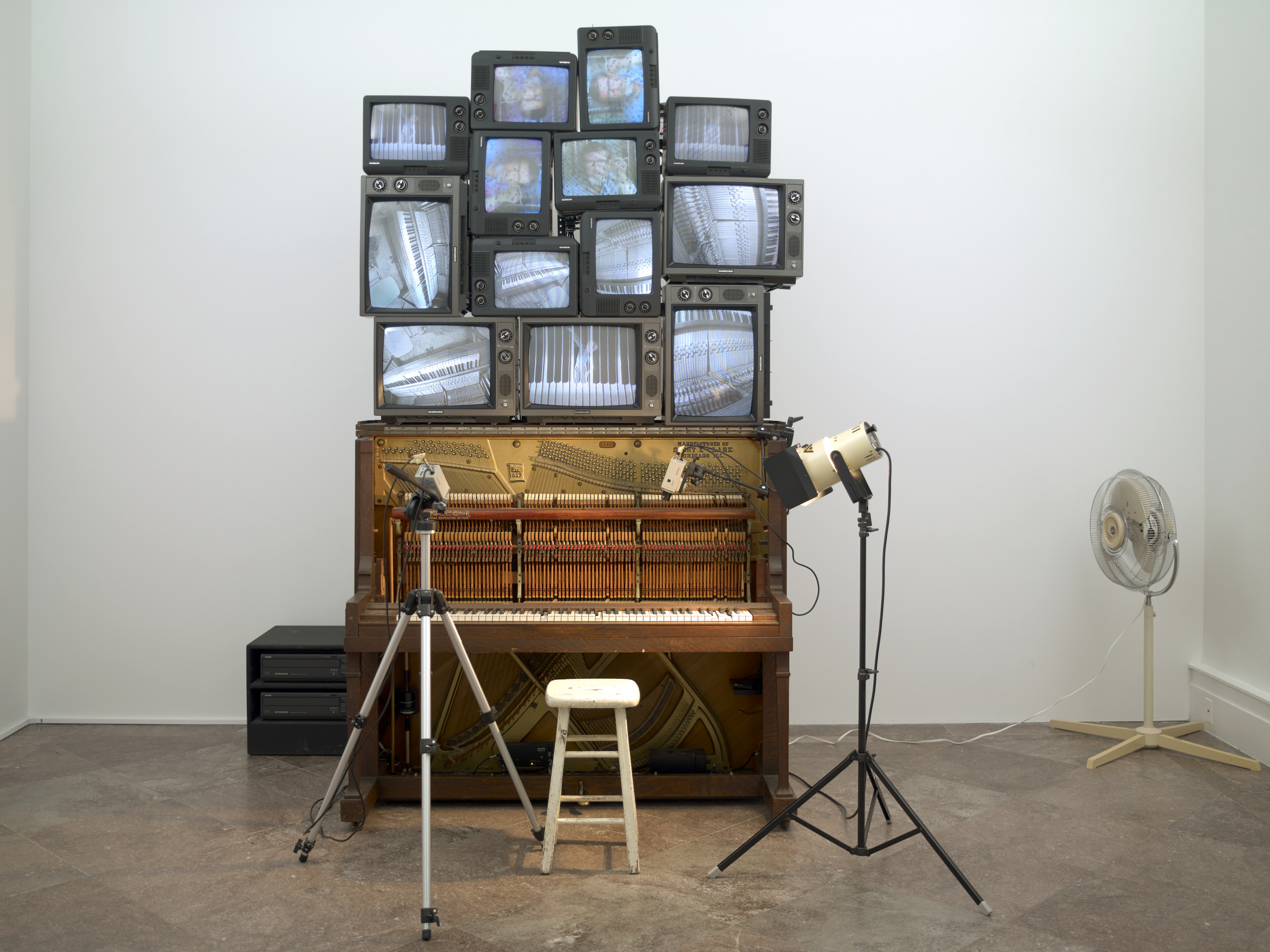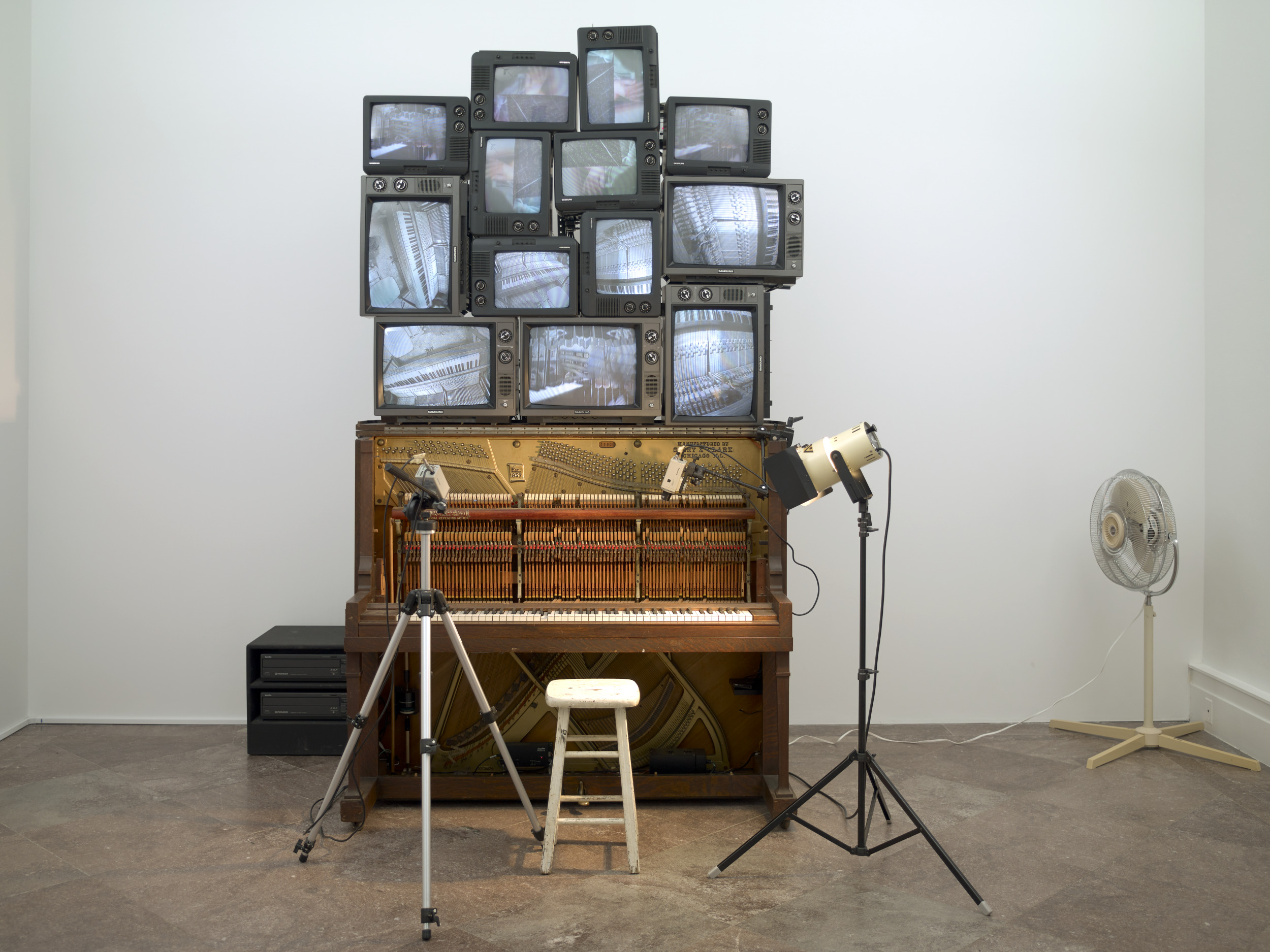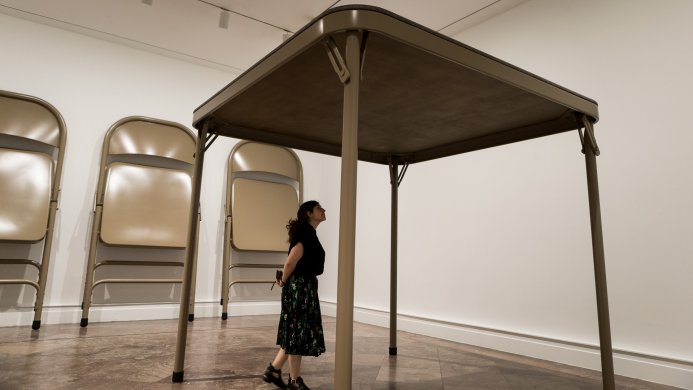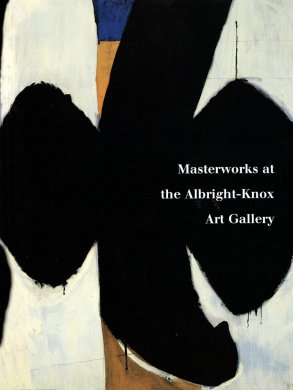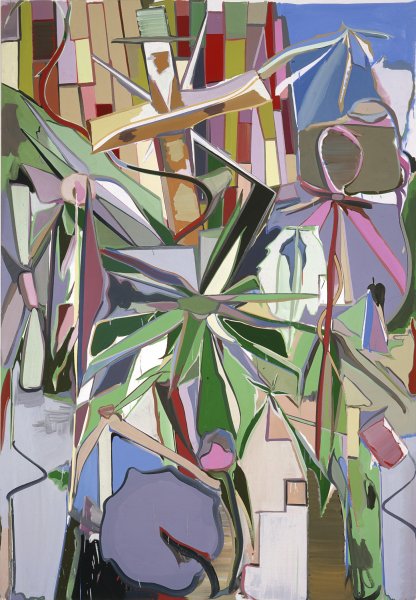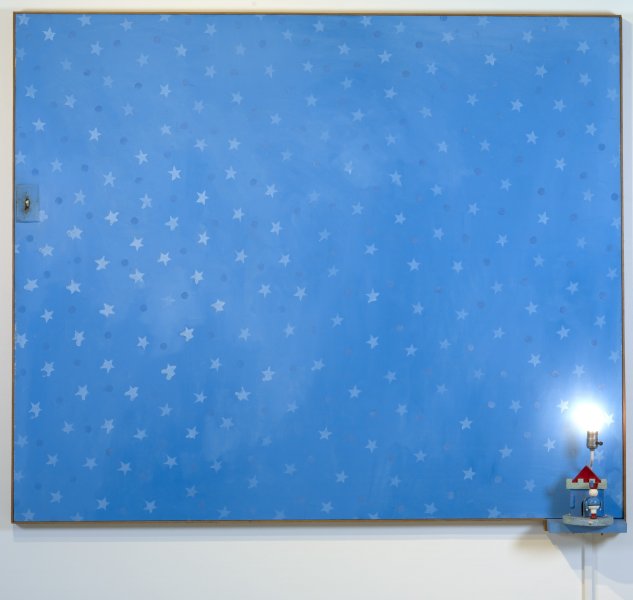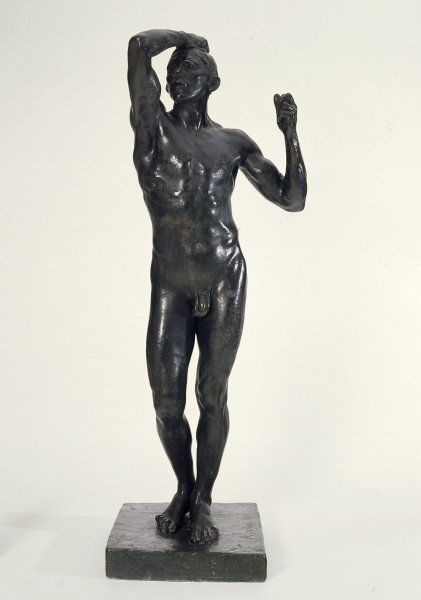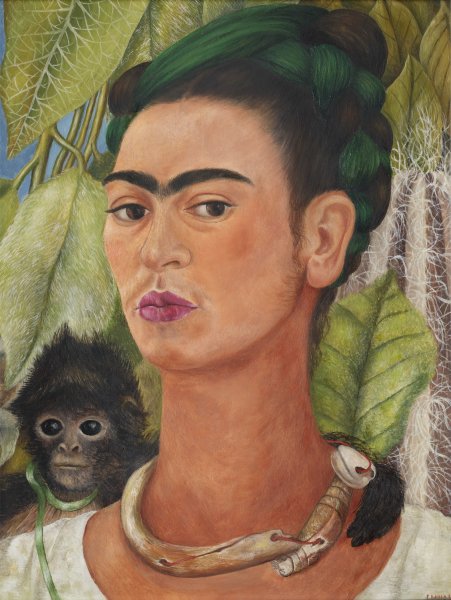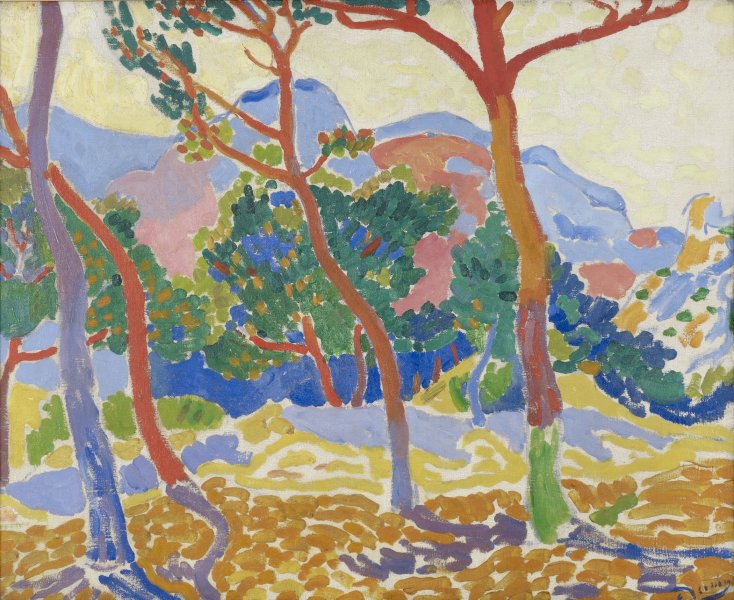Nam June Paik
South Korean, 1932-2006
Piano Piece, 1993
Artwork Details
Collection Highlight
Materials
closed-circuit video sculpture
Measurements
overall: 120 x 84 x 48 inches (304.8 x 213.36 x 121.92 cm)
Collection Buffalo AKG Art Museum
Credit
Sarah Norton Goodyear Fund, 1993
Accession ID
1993:9a-ii
Nam June Paik created Piano Piece as a tribute to his close friend and mentor, the avant-garde composer John Cage. Paik altered this piano to play one of Cage’s compositions using a computer program designed by Richard Teitelbaum, one of the artist’s numerous collaborators. The television monitors display collaged footage of Cage; shots of Paik’s hands while playing the piano; images of Cage’s collaborator and companion, avant-garde choreographer and dancer Merce Cunningham; and a live stream of the piano, captured by two cameras trained on the keys.
One of the most influential figures of his generation, Paik was the first artist to recognize the potential of both television and video as artistic mediums. For the artist, television provided a vast trove of images that he could alter for his own ends. Beginning in the late 1950s, he experimented with disrupting broadcast footage by applying magnets to television screens. In 1965, Paik became one of the first people in the United States to acquire a Sony Portapak—a relatively lightweight, mass-market portable video recorder—and he promptly shot his first video on the cab ride home. He exhibited the resulting work that evening at an artist’s club and came to be considered the inventor of video art.
Label from Out of Sight! Art of the Senses, November 4, 2017–January 28, 2018
